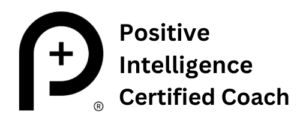 “Some seek the comfort of their therapist’s office, others head to the corner pub and dive into a pint, but I chose running as my therapy.” ― Dean Karnazes, Ultramarathon Man: Confessions of an All-Night Runner
“Some seek the comfort of their therapist’s office, others head to the corner pub and dive into a pint, but I chose running as my therapy.” ― Dean Karnazes, Ultramarathon Man: Confessions of an All-Night Runner
Every so often, I will post a slightly longer piece of writing. This is excerpted from an essay I wrote about running, one of the tools I’ve come to depend on to maintain my physical, spiritual, and emotional order.
My feet hit the pavement like a metronome, with an easy, automatic regularity. I’ve taken a side street to extend my normal running loop, trying to push beyond the three-mile mark that has become a little too easy.
At 48, I am a latecomer to running. Periodically over the years I had tried to run, but my body would break out in hives and, since I couldn’t resist scratching, I would come back looking like I had been mauled by a tiger. I was convinced that running wasn’t good for you, or at least it wasn’t good for me.
The calculation changed three years ago after I lost a breast to a mastectomy. I read about the cancer-fighting benefits of exercise, nutritional changes and stress management in David Servan-Schreiber’s Anticancer: A New Way of Life. My doctor confirmed that intense cardio exercise could reduce my risk of breast cancer recurrence. But she clarified that, based on my healthy baseline heart rate assessment, I needed to really get my heart pumping hard for 30 minutes a day, at least six days of the week. Walking and Pilates wouldn’t do it.
I was already struggling with my oncologist’s order to reduce my alcohol intake to two glasses of wine a week (that’s right, a week). On top of that, the anti-depressant I had been on for years impeded the effectiveness of Tamoxifen, the breast cancer medication I would be taking for at least five years. The prospect of dealing with side effects of a new anti-depressant was too much to pile on at the time, so I decided to give it a go without meds for a while.
I bought a heart monitor and joined a nearby gym. My doctor had said to get my heart rate above 140 beats per minute for at least half an hour per session. I wanted to get it over with as fast as possible. I discovered that running was far more effective than the elliptical trainer or even the stationary bike, both of which took longer to reach the target. I also felt claustrophobic in the gym, always preferring to be outdoors if possible. If I wanted to improve my chances of being at my kids’ weddings, I had to get over my lifelong aversion to running.
It was not a simple matter of buying a pair of running shoes and taking off for the hills. I had all sorts of odd sensory challenges during those early forays onto the running path. First and foremost was the itchiness that erupted after the first few minutes. Cooler temperatures, I discovered, provided a soothing counterbalance, so I shifted my timing to early morning or late afternoon hours in search of crisper air. When the temperature failed to drop sufficiently during our Virginia summers, I sandwiched myself between two fans on the treadmill at the gym.
Sweat-wicking fabrics also helped, leading me to explain to my husband that my life depended on acquiring a new workout wardrobe. I needed to buy an iPod to keep me as distracted as possible while taking this unpleasant medicine. My hair bouncing on my head was another annoyance, until I learned to always tie it down with a bandana (cheaper than the iPod, at least). I carry a second bandana to blow my nose, which runs non-stop right along with the rest of me. And then there’s the chronic underwear creep, no matter how many panty styles I try.
But I do it, just about Every Damn Day (as the Nike slogan goes). In the beginning, I couldn’t run a mile without stopping. Now I run three or four miles most days of the week, with cardio dance and boot camp classes sprinkled in between
Somewhere along the way, I found myself bursting into song in the shower and dancing while drying my hair. I couldn’t remember when, or if, I had ever been this happy. Not even the sight of the five-inch scar over my reconstructed plastic breast could dampen the utter joy I felt after a run.
In Spark: The Revolutionary New Science of Exercise and the Brain, John J. Ratey, MD, explains in laymen terms how aerobic exercise triggers chemical reactions in the brain that impact an astounding range of functions. Cardio work-outs boost the production of chemicals that reduce stress, anxiety and depression (better than the pharmaceutical industry ever could in my case). If we regularly push our heart rates high enough, we can improve our capacity for learning and memory retention. Aerobic exercise is a proven treatment for ADD/ADHD, helps stave off Alzheimers, and eases PMS and menopause symptoms. Most exciting is research suggesting that exercise actually stimulates the production of new brain cells. Pretty compelling arguments.
I often leave the iPod at home these days, preferring presence on the run rather than distraction. I have never felt more alive.


